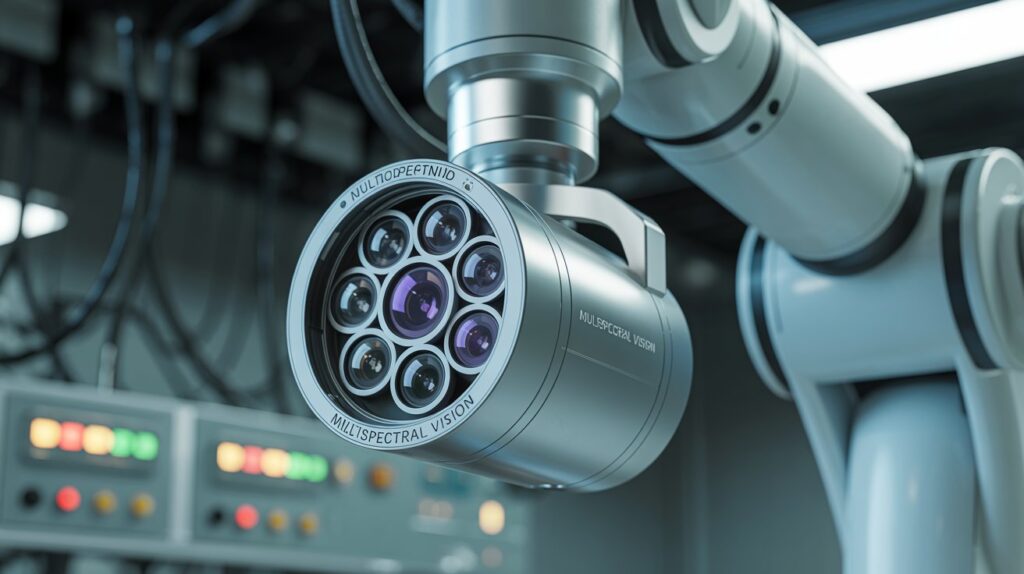As industries continue to demand richer data and deeper visibility, multispectral cameras are fast becoming essential tools across sectors—from defense and aerospace to agriculture and environmental monitoring.

According to a detailed market report by MarketsandMarkets, the multispectral camera market is projected to grow from USD 1.4 billion in 2023 to USD 2.2 billion by 2028, registering a CAGR of 9.0% over the forecast period.
Download PDF Brochure @ https://www.marketsandmarkets.com/pdfdownloadNew.asp?id=142623484
What Are Multispectral Cameras—and Why Are They So Important?
Multispectral cameras capture images across multiple wavelengths—extending far beyond the visible spectrum. This includes near-infrared (NIR), short-wave infrared (SWIR), mid-wave (MWIR), and long-wave infrared (LWIR) bands.
These imaging systems extract valuable information that’s invisible to the human eye—enabling applications like:
- Target detection in defense
- Vegetation stress monitoring in agriculture
- Thermal analysis in energy and infrastructure
- Diagnosis support in biomedical fields
- Disaster monitoring in remote regions
Key Market Insights from the 2023–2028 Forecast
1. Commercial Sector Leading the Charge
The commercial application segment is projected to grow at the fastest rate—driven by the adoption of multispectral sensors in precision farming, remote sensing, environmental monitoring, and medical diagnostics.
These cameras are critical for businesses aiming to maximize efficiency, minimize risk, and optimize resources through data-backed decisions.
2. Payloads Outpacing Man-Portable Devices
Unmanned platforms (UAVs, drones, and satellites) are increasingly being equipped with multispectral payloads. These payloads allow organizations to capture real-time spectral data at scale, even in inaccessible terrains.
3. Cooled Cameras Dominate Technological Demand
Cooled multispectral cameras currently hold the largest market share due to their high sensitivity, superior resolution, and better signal-to-noise ratio. These are especially valuable in defense, space observation, and scientific research where precision is critical.
4. Near-Infrared Spectrum Driving Agricultural Tech
The NIR segment is projected to lead in spectrum usage, particularly in precision agriculture. By detecting moisture levels, chlorophyll content, and plant stress, NIR imaging supports sustainable farming practices and higher crop yields.
5. Asia-Pacific—The Emerging Powerhouse
The Asia-Pacific region is forecasted to grow at the highest CAGR, driven by government investments in remote sensing, military modernization, and agri-tech innovations in countries like China, India, and Japan.
Industry Leaders and Innovators
Major players in the multispectral camera market include:
- Teledyne FLIR (US) – Specializing in advanced cooled/uncooled systems
- Leonardo DRS (US) – Known for tactical ISR and defense optics
- DJI (China) – Offering integrated drone-based multispectral imaging
- Hensoldt (Germany), JAI (Denmark), Telops (Canada) – Leading in high-resolution spectral optics and innovation
These companies are shaping a future where machine vision and spectral intelligence become core components of operational strategy.
Ask for Sample Report @
https://www.marketsandmarkets.com/requestsampleNew.asp?id=142623484
The Strategic Takeaway
As the global demand for actionable, non-visible data intensifies, multispectral cameras will play a defining role in shaping outcomes across key industries. Whether you’re monitoring a battlefield, surveying farmland, or managing critical infrastructure, these systems allow organizations to move from “seeing” to “understanding.”